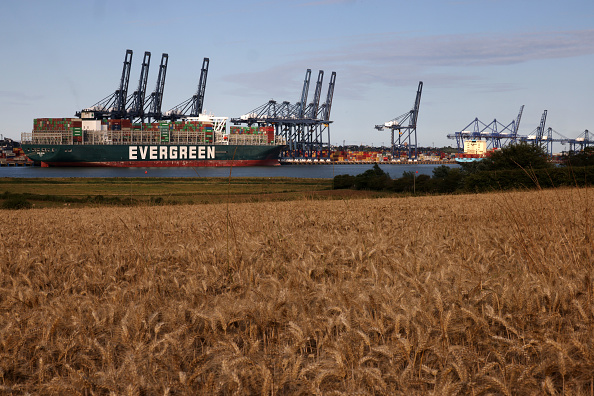An Evergreen gift: supply chain plans need to move from the Dark Ages onto our screen

In March last year, the plight of a ship, stuck in the Suez canal became a fixation for people across the world. The Ever Given became grounded and caused reverberations to global supply chains for weeks. The latest misadventure is that of the ironically named Ever Forward, which grounded in Chesapeake Bay near Baltimore, Maryland. For the Evergreen Marine Corps, the owner of the ships, lightning really does strike twice.
The Ever Given was an iconic moment of global supply chain-related panic, with over 350 ships forced to queue behind the container ship and its containers bound for destinations across the globe.
In the wake of the incident, the very concept of getting items from A to B was thrust into the spotlight. The supply chain and procurement worlds are often accused of being opaque; parcels arrive without questions being asked, deals are signed with a handshake in a warehouse somewhere.
In reality, the reason for this opacity is that procurement still lives in the Dark Ages. Sometimes thousands of parties bid for the same job, and handling these kinds of RFPs (requests for proposals) can be a mammoth and expensive task carried out over email and attachments, and even sometimes pen and paper.
Since the Ever Given blocked the Suez Canal, businesses around the world have been paying closer attention to their supply chains and procurement processes. This increased focus has been further accelerated by other supply chain crises such as Brexit and Covid-related port closures in places like Yantian, China. In 2022, it’s safe to say Chief Supply Chain Officers are in high demand.
The solution, as is often the case in antiquated industries, is technology. Procurement professionals today typically use outdated software that is liable to all kinds of compliance risks, inefficiencies, frustrations, human errors, and increased spending. Outdated manual processes and broken servers can lead to issues, whereas AI-powered technology can help manage all procurement in a way that’s more efficient, accountable, and auditable. When a crucial trading artery like the Suez Canal is blocked, with the right technology you can see where your items are and where they need to go. Otherwise, you’re in the dark.
Moving procurement away from emails, archaic and clunky processes, and sometimes even physical folders in filing cabinets, we can start to understand the intricacies of complicated supply chains. Through digitalisation, we can bring visibility to the sector. If buyers can see their suppliers’ ESG criteria all in one place, for example, they can make informed decisions based on sustainability metrics. When that happens, it becomes commercially (rather than just ethically) incentivised to “go green”. Total transparency allows everyone to make smarter purchasing decisions. It’s no longer acceptable for a business to hide behind ignorance around their suppliers. But the only way to have insight into every single supplier you work with, is through significant technological advancement.
When a seismic event happens, like the Suez Canal blockage or a global pandemic, businesses that have visibility across their supply chain can adapt fastest and use data to find alternate solutions and prosper. With a number of traditional sectors having gone digital to help customers and staff adapt to a new way of living, we now need procurement and the supply chain to go the same way.
